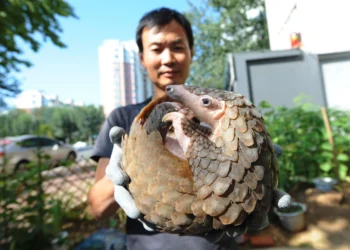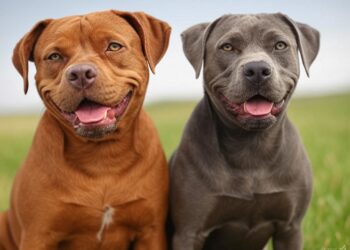The dentition of your dog contributes to his good health. Taking care of your dog’s teeth is essential for your well-being and it is advisable to set up a routine to facilitate this type of care.
The maintenance of your teeth helps to avoid bad breath and the development of bacteria, but also to preserve your oral health and prevent the risk of diseases that can be serious. Find out how to take care of your dog’s teeth with our tips.
Why take care of your dog’s teeth?
Your pet’s teeth wear out over time and must be properly cared for and maintained regularly. Indeed, just like humans, dogs are exposed to the risk of bad breath, tartar, plaque, canker sores and infections such as gingivitis or periodontists.
A dog has its definitive teeth at four months or six months of age depending on the breed. It is the age from which it is important to take care of it regularly in order to prevent the natural deposits of tartar accumulate until forming gingivitis and various infections.
If gum inflammation seems innocuous, it can lead to much more serious disorders if left untreated, such as severe heart problems.
The wild dogs and other carnivorous animals in the wild do not have the same needs in terms of oral hygiene because their diet is based on contributions in raw meat, cartilage and bone.
Their teeth are naturally strengthened and cleaned. In contrast, domestic dogs eat industrial food that forms a tartar deposit and compromises the proper oral balance.
When the dentition of dogs is not maintained and treated, the first problems occur between the age of two and three years. It is therefore essential to set up a hygiene and care routine well in advance to avoid these problems.
5 signs that your dog may have a dental problem
- Bad breath.
- Does not want to eat (hard) food.
- Dog only chews on one side.
- Dog must choke.
- Drooling unusually or starting suddenly.
How to take care of your dog’s teeth?
The best way to take care of your dog’s teeth is to set up a care and maintenance routine. The washing of the teeth for example is not a natural action in the animal which can, if it is subjected to it as an adult, refuse it or live it with difficulty. By accustoming him from an early age, you facilitate the procedure.
Several options are possible to help you.
An adapted diet
For the care of your teeth, your pet needs a quality and healthy diet. It is best to give your dog dry food, such as kibble, and large. These foods are less sticky than the mash, they are unlikely to get stuck between the teeth if they are large and they help to better clean the enamel by friction. In addition, they naturally strengthen the dentition through their ingredients and chewing.
If you like to reward your pet, prefer dog treats, which are also big here. Avoid small pieces and treats for humans, which are more likely to get stuck between your pet’s teeth.
You can give a bone to gnaw at your dog. Chewing it will help clean teeth and strengthen gums. On the other hand, never give him boiled bones or brittle bones that could hurt him badly. Always ask beforehand not to risk giving him a bone dangerous to his health.
Regular brushing
Like you, your dog needs to brush his teeth. You can try the so-called conventional brushing, using a dog toothbrush and a toothpaste that he can swallow safely. However, this technique is better tolerated by the animal if it is practiced at a young age – that is to say from 4 months – and very regularly, twice a week on average.

If it is not possible, opt for toys specially designed for brushing and for the elimination of small food residues stuck between the teeth.
A frequent visual check
Check your pet’s teeth regularly by opening his mouth and lifting his chops. This preventive action will make it possible to check that no food is stuck. The tartar does not deposit on the teeth, that the gums are healthy and that they do not bleed, that no sore or no sore mouth has appeared or that your dog does not suffer from bad breath, sign of an oral infection or the digestive tract.
The visit to the vet
Every year, visit the veterinarian for the annual health checkup of your pet. Take the opportunity to check his teeth. Depending on the condition of the patient, he may advise you to carry out a descaling, or, if the infection is present, more specific care and other examinations.
Descaling is an operation that can last up to an hour and is done under general anesthesia. It takes a bill of 120 to 200 euros.
Tips for cleaning and caring your dog’s teeth
1. Start with early age
Start early with regular dental care – preferably as soon as puppy age. Check his teeth, paying attention to discoloration, odor and redness of the gums.
2. Set up a routine
Set up a routine and get used to your pet from an early age, because dogs do not really like to have a finger in the mouth. Every day or every other day, rub your teeth gently with your index finger for up to 5 minutes. Even if he does not appreciate, he will think that this is normal and will let you do it.
When you have your final teeth, equip yourself with a small, soft dog toothbrush found at your vet or pet store and gently brush your teeth with it. Change her brush as soon as it is worn so as not to irritate her gums.
3. Avoid toothpaste
Never give your dog toothpaste because it contains fluoride, a substance that is toxic to him. Buy a dog toothpaste at your vet or pet store, which does not need rinsing and your pet can swallow safely.
4. Brushing schedule
Brushing should be done once or twice a week, after a meal preferably. Take the opportunity to check that his mouth is healthy by a visual check.
5. Don’t throw stones
Don’t throw your dog stones or tennis balls. Stones can make teeth break off and the nylon fibers of tennis balls rub off tooth material. Although the body counteracts this, it can not completely stop it.
How the care of dog teeth makes your dog happier
Healthy gums and clean dog teeth promote the well-being of your dog. Bacteria due to bad dental care can cause pain, discomfort, and disease, which can make your dog have trouble eating and even picking up the stick, which makes him very unhappy!
If your dog has bad breath due to a dental disease, which is bad news for you. Worse, poor mouth hygiene can lead to health problems without treating the dog’s teeth, which can damage your dog’s heart, kidneys, and other organs.
We know that as a loving owner, you want to avoid these problems at all costs and your dog should be as happy and healthy as possible.
Frequently Asked Questions
How often do you have to brush a dog’s teeth?
Ideally, your dog’s teeth should be cleaned daily as plaque can turn into tartar after just three to five days. This can then often only be removed professionally by a veterinarian. This is a costly and stressful procedure that you and your dog should avoid, if possible.
Is special dog toothpaste necessary?
Toothpaste is not mandatory for dogs. But a dog toothpaste is not only specifically designed to meet the needs of dog teeth, but can also help to increase the acceptance of brushing your teeth and to literally make your dog taste the process in the truest sense of the word.
Toothpastes for dogs often have dog-friendly flavors such as chicken, fish or liver. Unfortunately, there is still the myth that even a normal toothpaste for people can be used for cleaning teeth in dogs. However, this is not correct and responsible dog owners should refrain from doing so as human toothpaste is harmful to the dog.









